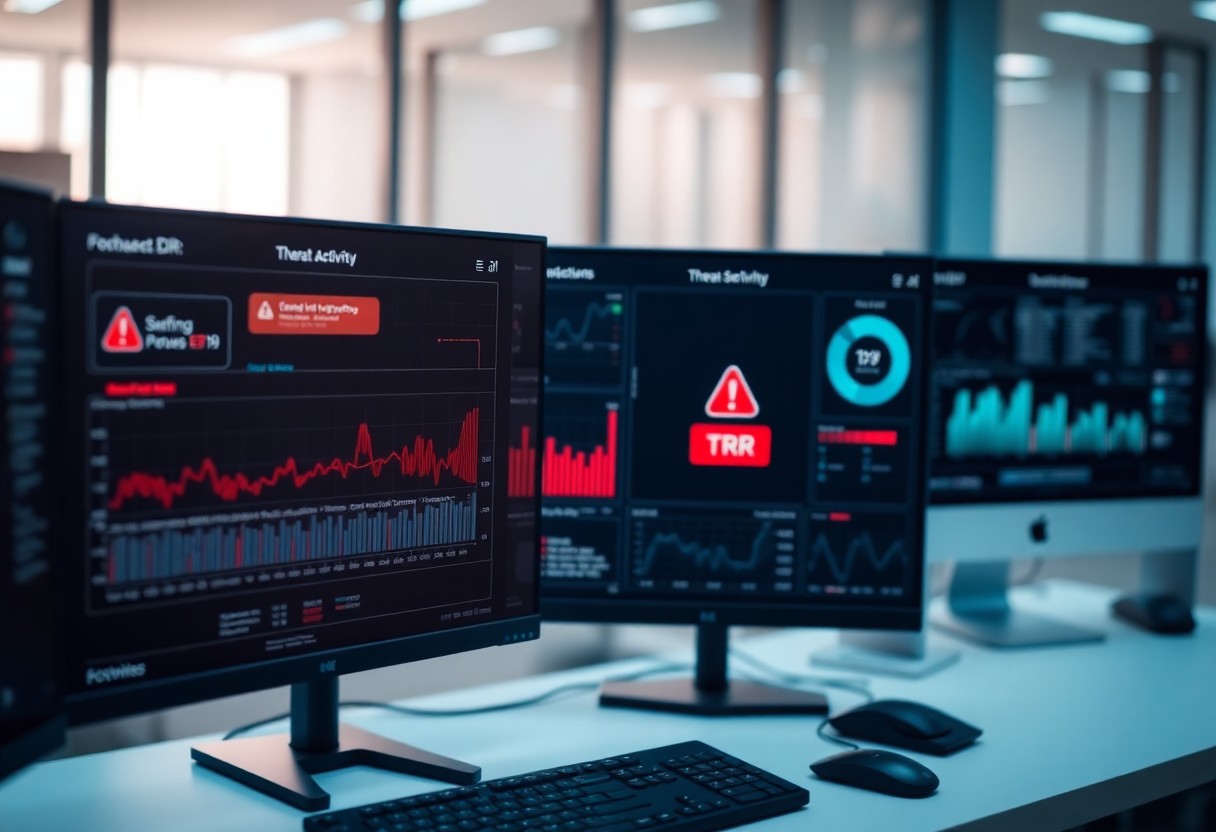What Is Endpoint Protection And Why It’s Critical For Cyber Security
You need to understand that endpoint protection is a vital component of your cyber security strategy. This technology...

You have a vital role in protecting your organization’s digital assets, and understanding how Endpoint Detection and Response (EDR) systems work can significantly enhance your cybersecurity posture. EDR solutions continuously monitor endpoint activity, providing real-time threat detection and enabling swift response actions. By utilizing advanced analytics and machine learning, EDR not only identifies potential threats but also isolates them before they can escalate. This proactive approach ensures that you can safeguard your environment, minimizing potential damage and maintaining business continuity.
EDR is a cybersecurity technology designed to monitor, detect, and respond to threats across endpoints within your network. By providing real-time visibility into endpoint activities, EDR solutions empower you to identify suspicious behavior that could indicate a potential security breach. This proactive approach allows for rapid response to threats, minimizing potential damage and ensuring your organization’s data remains secure.
Endpoint Detection and Response (EDR) refers to a set of security solutions that provide continuous monitoring and response capabilities for endpoint devices. EDR tools analyze data from endpoints to detect advanced threats, enabling you to respond swiftly to any indications of compromise. By leveraging sophisticated algorithms and threat intelligence, EDR helps keep your network secure.
Key features of EDR solutions encompass a range of capabilities vital for effective threat management. These features not only enhance threat detection but also streamline the response process, making it easier for you to safeguard your organization. Thou must understand their significance in building a robust security posture.
Each feature of EDR plays a vital role in fortifying your cybersecurity framework. Real-time monitoring ensures that potential threats are identified as they emerge, while incident response automation can significantly reduce the time it takes to address a security issue. Integration of threat intelligence allows you to stay ahead of emerging threats by understanding current attack vectors and tactics. Furthermore, behavioral analysis enhances detection accuracy by identifying deviations from established patterns. Thou must leverage these features to create a comprehensive defense strategy.

Your organization faces an evolving array of cyber threats that exploit weaknesses in security systems. Attackers continually develop new strategies, including phishing, ransomware, and advanced persistent threats (APTs). This dynamic environment requires constant vigilance and adaptive strategies to effectively combat potential breaches and maintain data integrity.
Understanding cyber threats helps you better prepare your defenses. Common types include:
After identifying these threats, you can implement targeted responses to mitigate their impact.
| Type of Threat | Description |
|---|---|
| Phishing | Fraudulent communication typically via email to steal sensitive information. |
| Ransomware | Malware that encrypts files, demanding payment for decryption. |
| Malware | Malicious software designed to disrupt, damage, or gain unauthorized access. |
| Insider Threats | Threats originating from within your organization, often from disgruntled employees. |
| DoS Attacks | Attempts to make a service unavailable by overwhelming it with traffic. |
Cyber threats can cause significant harm to your organization, affecting both finances and reputation. The fallout from a successful breach often includes loss of sensitive data, legal repercussions, and a decline in customer trust. Organizations impacted by cyber incidents may face operational disruptions and costly recovery efforts.
Statistics indicate that 60% of small businesses close within six months of a cyber attack due to the high costs of recovery and reputational damage. The average cost of a data breach is projected to reach $4.35 million, underlining how critical robust preventative measures are. Beyond financial implications, the erosion of customer confidence can take years to rebuild, underscoring the importance of a proactive approach in your cybersecurity strategy.
EDR solutions operate by continuously monitoring endpoints for signs of suspicious activity and potential threats. By leveraging advanced analytics and machine learning, these systems analyze vast amounts of data in real time to identify anomalies indicative of attacks. For further details, you can explore What Is Endpoint Detection and Response (EDR)?
Threat detection in EDR utilizes various mechanisms, including behavioral analysis, signature detection, and threat intelligence integration. By correlating endpoint activity with known attack patterns, EDR platforms can swiftly identify and flag potential intrusions before they escalate.
Effective response strategies in EDR involve automated containment, remediation actions, and incident investigation. These allow your security team to neutralize threats quickly, minimizing damage and maintaining operational integrity.
Automation plays a significant role in response strategies, enabling rapid isolation of compromised endpoints to prevent lateral movement within your network. For instance, once EDR detects a malicious file, it can automatically quarantine the file and block its execution, allowing your team to focus on investigating the root cause. Additionally, comprehensive reporting and forensic capabilities aid in enhancing your security posture by identifying weaknesses and improving overall incident response frameworks.
Your ability to monitor endpoints in real-time significantly boosts your organization’s defenses against cyber threats. By continuously analyzing activity across all devices, you can identify anomalies that may indicate a security breach. This immediate visibility allows for swift action, potentially neutralizing threats before they escalate. Implementing robust real-time monitoring not only helps in detecting attacks early but also reduces the potential impact on your systems and data integrity.
Adopting a proactive approach to cybersecurity enables you to anticipate potential threats before they create damage. Unlike reactive methods that respond only after incidents occur, proactive strategies involve ongoing monitoring, regular vulnerability assessments, and employee training to mitigate risks. This shift in focus helps safeguard your organization’s assets and reputation.
Continuous threat assessment involves ongoing evaluation and analysis of potential cybersecurity risks within your environment. By leveraging automated tools and threat intelligence, you gain insights into emerging threats and vulnerabilities specific to your industry. This real-time analysis ensures that your security measures are always aligned with the evolving tactics of cybercriminals.
Continuous threat assessment requires integrating advanced analytics and real-time data collection to identify patterns and anomalies indicative of potential threats. Utilizing machine learning algorithms can enhance this process by analyzing vast amounts of security data, identifying trends, and providing predictive insights. This agility enables your security team to focus their efforts on the most pressing threats, enhancing your overall security posture while preventing breaches before they manifest. Regular updates from threat intelligence sources further ensure you stay ahead of new attack vectors, reinforcing your defenses effectively.

Effectively integrating EDR with your existing security frameworks enhances your overall defense strategy. This seamless integration allows for improved data sharing and a unified view of your security posture, enabling quicker incident response. By utilizing the strengths of existing security measures alongside EDR capabilities, you can create a layered defense that is both robust and adaptive to emerging threats.
Linking EDR solutions with Security Information and Event Management (SIEM) systems amplifies threat detection and response capabilities. By feeding EDR data into your SIEM, comprehensive analytics can reveal hidden patterns and correlations, facilitating real-time insights and quicker decisions in response to incidents. This synergy dramatically increases visibility across your security landscape.
Your cybersecurity posture improves significantly when EDR is integrated with other security measures. Real-time monitoring and rapid response to threats deter potential breaches, while comprehensive analytics uncover vulnerabilities and guide proactive measures to strengthen defenses. This holistic approach fosters a culture of security awareness within your organization, encouraging best practices that reduce risk.
With integration, you can leverage EDR’s capabilities for continuous improvement in your cybersecurity approach. For instance, analytics derived from EDR data can help identify areas of vulnerability, enabling targeted training for employees, or guiding strategic investments in technology. Moreover, combining EDR insights with threat intelligence can enhance your predictive capabilities, allowing you to stay ahead of potential attacks by implementing preventive measures based on observed tactics, techniques, and procedures. This integrated security strategy not only fortifies your defenses but also empowers your teams to actively engage in cybersecurity, fostering a more resilient organization.

EDR solutions, while effective, face several challenges that may hinder their performance. These can include high rates of false positives, which overwhelm security teams with alerts, and the potential for missed threats if the system is not accurately configured. Additionally, cost and resource requirements can be a barrier, particularly for smaller organizations. Understanding What is Endpoint Detection & Response? A Complete … can help clarify these concerns and inform better decision-making.
One significant drawback of EDR systems is their reliance on endpoint agents, which can create vulnerabilities if not adequately maintained. High resource consumption can impede system performance, especially on older machines. Moreover, EDR often requires skilled personnel for effective management, which may be hard to obtain and retain.
Addressing the limitations of EDR can involve a combination of proactive strategies. Continuous training of your security personnel will enhance expertise, allowing better configurations and quicker responses to alerts. Regular updates and maintenance of EDR tools can also minimize resource issues and improve detection accuracy. Moreover, integrating EDR with existing security frameworks can create a more layered defense, ensuring that any potential gaps are covered effectively.
With this in mind, understanding how Endpoint Detection and Response (EDR) helps prevent cyber threats before they spread is important for protecting your organization. EDR solutions provide real-time monitoring and response capabilities, enabling you to detect and neutralize threats at their inception. By leveraging advanced analytics and machine learning, you can identify suspicious activities and take immediate action, ensuring your endpoints remain secure. Implementing EDR not only enhances your cybersecurity posture but also minimizes potential damage and downtime from incidents, empowering you to maintain business continuity in an increasingly hostile digital landscape.
A: EDR is a cybersecurity solution that continuously monitors and collects data from endpoints to detect, investigate, and respond to potential threats in real-time.
A: EDR employs advanced analytics, machine learning, and behavioral monitoring to detect anomalies and suspicious activities on endpoints, enabling rapid identification and containment of threats before they can proliferate across the network.
A: Once a threat is detected, EDR can isolate affected endpoints, remove malicious files, and provide detailed forensic data for investigation, all while allowing ongoing operations on unaffected systems.
You need to understand that endpoint protection is a vital component of your cyber security strategy. This technology...
You rely on robust cybersecurity measures to protect your business from evolving threats, and Endpoint Detection and...